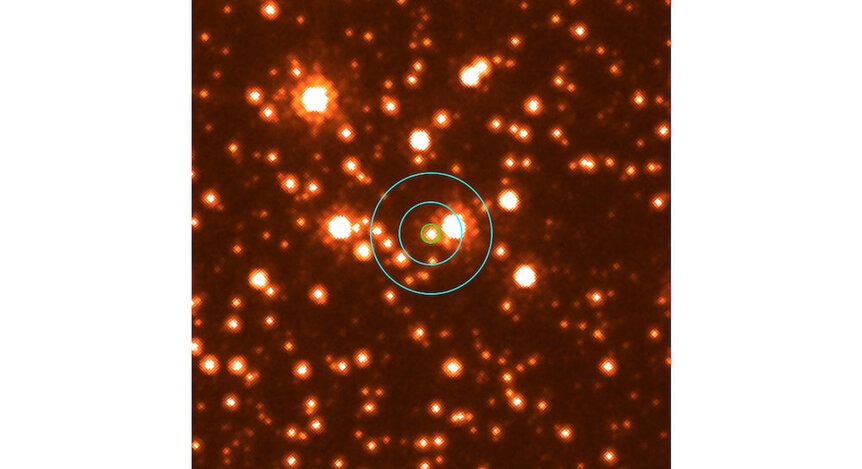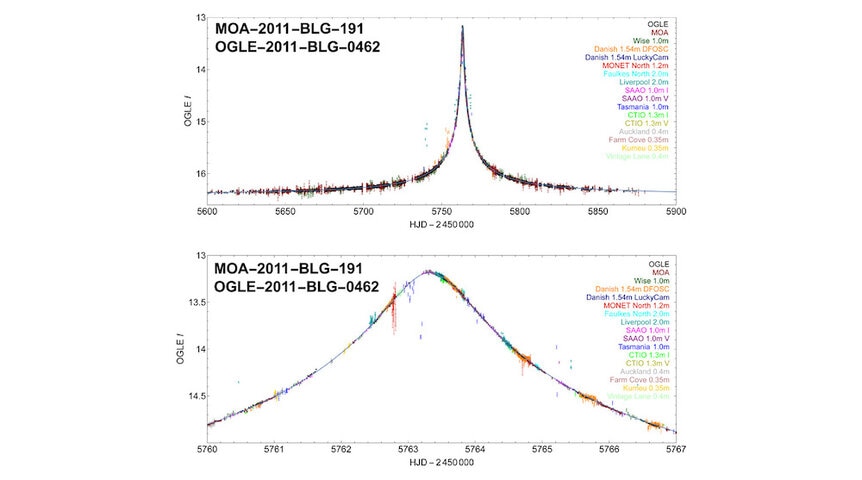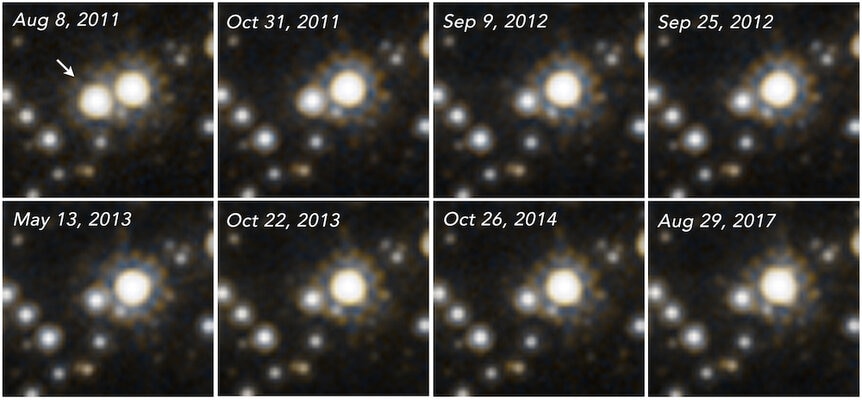Create a free profile to get unlimited access to exclusive videos, sweepstakes, and more!
Astronomers find the first rogue black hole wandering the Milky Way!
If confirmed, it's the first isolated stellar-mass black hole ever found.

Exploiting a bizarre property of black holes and gravity, astronomers may have made the first unambiguous detection of an isolated stellar-mass black hole in our galaxy, including a measurement of its mass and distance! If this pans out it will be the first rogue stellar-mass black hole found anywhere that wasn't detected via violently eating a star or some other object.
To be clear up front: The paper is not yet peer-reviewed, but has been submitted to The Astrophysical Journal (link to paper). I know some of the authors personally and by reputation, and it's an impressive list. Still, bear in mind it has not been scientifically vetted by an outside referee yet.
The black hole doesn't have a name per se, but the event that triggered its discovery is called MOA-2011-BLG-191/OGLE-2011-BLG-0462. If confirmed, it has a mass of roughly 7 times that of the Sun and is a little over 5,000 light years away. That's a long walk, so no need to worry about imminent Death from the Skies on this one.
A few dozen black holes have been found in our Milky Way galaxy, most of which are still awaiting confirmation. The thing about black holes is they're black, so they don't give off light of their own, making them difficult to spot. They're found by their effects on objects and materials around them. Matter falling in heats up and can emit huge amounts of energy, making them incredibly bright. Most local black holes are found when they orbit a star like the Sun, draw matter off it, and light up like a beacon. Also, when black holes collide and merge they emit gravitational waves, and dozens have been found that way, though they are hundreds of millions or billions of light years away.
Isolated local black holes are therefore much, much harder to detect. There are likely hundreds of millions of such black holes in the Milky Way, but space is big, the black holes are dark, and finding them extremely difficult.
But not impossible. There's another way they reveal their presence, and that's through gravitational lensing. As I have written before:
Briefly, gravitational lensing is when the gravity of a massive object — a star, a black hole, a galaxy — bends space around it, causing light passing by to curve, like a car following the curve of a road. Einstein [wrote about this in relation to his work on Relativity], saying that matter bends space and we perceive this bending as gravity. So we call this gravitational lensing; the object bending space is the lens, and the object whose light is distorted the lensed object.
[...]
Nowadays we've seen this effect countless times. It's a little odd; not only can a lensed object's position in the sky be moved around a little by this effect, but it can also be distorted, stretched out like taffy, even wrapped around the lens like a ring (we call those Einstein rings, in fact), and made far brighter by the lens than it would be otherwise.
When a single small object does this it's called microlensing. If a black hole, say, passes between us and a star, the image of the star gets multiplied and amplified, and its position on the sky is also deflected a tiny amount by the lensing. Both of these can, in theory, be measured if the effect is pronounced enough.
Astronomers created surveys like the Microlensing Observations in Astrophysics (MOA) and the Optical Gravitational Lensing Experiment (OGLE) to basically stare at one spot in the sky where there are lots of stars — for example toward the bulge of stars in the center of our galaxy — maximizing the chance of detecting a lensing event.
MOA and OGLE both saw the same one in 2011. In a crowded stellar field close to the galactic center, a star about 19,000 light years from Earth started getting brighter. Plotting the light curve, the graph of the star's brightness over time, it took over 270 days to brighten and fade, and at its peak the light from the star was amplified by a very impressive factor of nearly 370 times.
The light curve shape and duration of the event help pin down much of the physics, but to really nail them the astronomers used Hubble Space Telescope to observe the star 8 separate times over the course of the lensing event. They saw a clear deflection in the position of the star by about 5 milliarcseconds, a fantastically small amount: Roughly the size of a US quarter seen from just over a thousand kilometers away.
All of these measurements together were then used to find the mass and distance to the lensing object. They found the lens has a mass of 7.1 ±1.3 times the Sun's mass and a distance of 5,150 ±600 light years from us… but no light was seen from that object.
The only object that massive and dark is a black hole. That mass is in fact what you'd expect from a somewhat run-of-the-mill black hole that forms after a massive star explodes and its core collapses, called a stellar-mass black hole, so this all fits together pretty well.
They also find the black hole is moving relatively rapidly through space. They can't get the total velocity with this data, but its moving about 45 kilometers per second across our line of sight, which is fast — 14 octillion tons of black hole moving at 160,000 kph is impressive — but around the value expected if it was given a kick from the supernova explosion that formed it.
So, if confirmed, this is a very exciting discovery! We know those black holes are out there, and this research points to how we can find them.
Even better: The Nancy Grace Roman Space Telescope is a Hubble-like observatory that should hopefully launch in the next decade, and will have Hubble's resolution and ability to see deep, with one hundred times Hubble's field of view. It will be a black-hole-microlensing-finding machine, and over the years should find several thousand of these events. That will be an invaluable addition to our understanding of these lone black holes plying the dark of the galaxy, including not just their distance and mass, but how many there are, how they formed, how they've changed over time, and more.
But there has to be a first, and we may very well have it now.





























